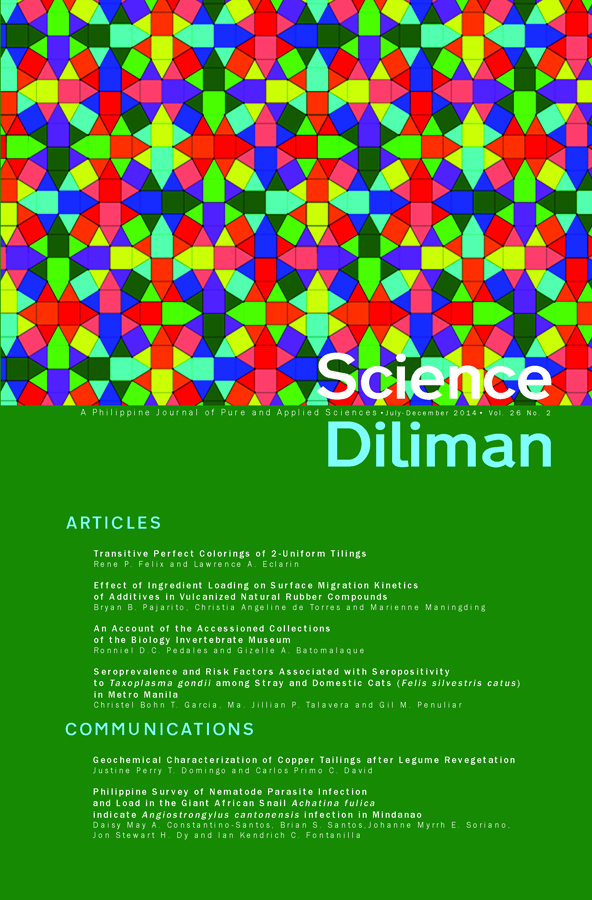Geochemical Characterization of Copper Tailings after Legume Revegetation
Abstract
Knowledge on the geochemistry of mine tailings is important in understanding the challenges in establishing vegetation cover on tailings dumps and mined out areas. In this study, the mineralogy and trace element composition of copper tailings were examined. Two legume species, Calopogonium mucunoides and Centrosema molle, were utilized to investigate the possible effects of these plants in the geochemical development of mine tailings into soil-like material. The initial mineralogical and chemical analysis of the tailings samples indicated poor conditions for plant growth—minimal levels of major nutrients and organic matter as well as elevated copper concentrations. Despite these conditions, the two legume species exhibited good growth rates. Both legumes have likewise signif icantly reduced heavy metal concentrations in the tailings, indicating the possibility of metal hyperaccumulation in the plant tissue. The mineral composition has been retained even after revegetation; nevertheless, breakdown of primary minerals and subsequent formation of clay minerals were detected. These results provide insights on the transformation of toxic materials into habitable substrates for sustained plant growth.
Keywords: Tailings characterization, mineralogy, heavy metals, revegetation



